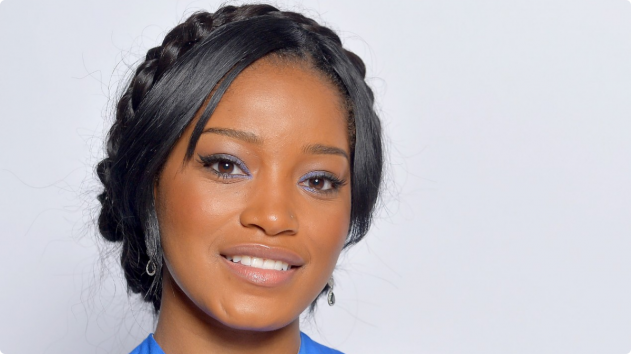Palmer’s role reflects an important departure from business as usual on Broadway, and is a meaningful step in the right direction. But now we await the fallout.
Keke Palmer made theater history yesterday, with the announcement of her casting in the title role of Rodgers & Hammerstein’s Cinderella, currently playing at New York City’s Broadway Theatre. As the first African American cast to perform the role of Cinderella on Broadway, Palmer’s casting represents an important intervention in the aptly dubbed Great White Way.
The world of Broadway—in which the casting of African Americans and other people of color is often reserved for so-called “ethnic” roles—is notoriously whitewashed. And of course, it is revealing that the casting of an African American actress as Cinderella is newsworthy to begin with.
Still, the announcement that Palmer has been cast as Cinderella is a welcome one, representing a significant moment for the performer and for Broadway. One hopes this—her first Broadway role—will bring the trailblazing performer’s career to an even higher level.
Nevertheless, one awaits the fallout.
While Palmer’s casting is a milestone and, one hopes, a harbinger of change, it also calls to mind the recent casting of a young African American actress named Quevanzhané Wallis in the title role of Annie, in the 2014 remake of the musical comedy. An ebullient and talented young actress, Wallis was the youngest person ever to be nominated for the Academy Award for Best Actress for her performance in Beasts of the Southern Wild (2012). Graced with no shortage of acting chops, screen presence, and adorable likeability, the actress was inimitably qualified to play Annie, or any other role. Casting this young star was both a no-brainer and a coup for the production company. Nevertheless, racist Internet trolls took to Twitter, and all but lost their minds. “Annie” was white, you understand, and heaven forbid anyone imply an alternative.
On the other hand, for some well-intentioned white people, the casting of Palmer as Cinderella is likely to reinforce the misguided notion that racism is a thing of the past, dead and gone. I can hear the argument now, a theatrical variation on the But we have a Black President! line of reasoning. The casting of Broadway’s first African American Cinderella* signifies something similar, and that is problematic.
I don’t mean to minimize the accomplishment of Palmer’s casting, or to in any way suggest that the milestone is not significant. On the contrary, Palmer’s role reflects an important departure from business as usual on Broadway, and indeed a meaningful step in the right direction.
It is widely acknowledged that Broadway, and the American theater moreover, are lacking in diversity, in ways that are egregious, longstanding, and deeply entrenched. But Broadway is not alone in its predicament. To wit, a study released earlier this week from the Annenberg School for Communication and Journalism at the University of Southern California (USC) suggests that although 17% of U.S. nationals identify as Hispanic, only 4.9% of the 100 top-grossing films of 2013 featured Hispanic actors. Indeed, the problem of diversity in entertainment is endemic, in the realms of casting, directing, and production.
While trailblazing actors such as Palmer and Wallis have long been carving out spaces for themselves in an industry inhospitable to people—particularly women and girls—of color, it is incumbent upon the entertainment industry to change its game.
Not because it is the right thing to do—although it is. Talented performers who are people of color deserve equality of opportunity, certainly. This is self-evident. Entertainment is fantasy, some might argue, what does it matter if the actors are mostly white? But this argument is not good enough. If Broadway is to retain any sort of relevance, it must do a better job of reflecting the diversity of our world.
To put it simply, the Great White Way owes it to its various publics to be a little less white. The casting of Keke Palmer as Broadway’s latest Cinderella suggests a recognition of that reality, and that at least a few of the powers that be are paying attention.
*Note: Although Palmer is the first African American to perform as Cinderella on Broadway, it is worth noting that African American performing artist Brandy played the role in a made-for-television movie production, initially released in 1997.
Adina Giannelli’s writing has been featured in publications including Babble, Feministing, Salon and the forthcoming anthologies Book Lovers and Three Minus One Equals Zero.
Related Links:

